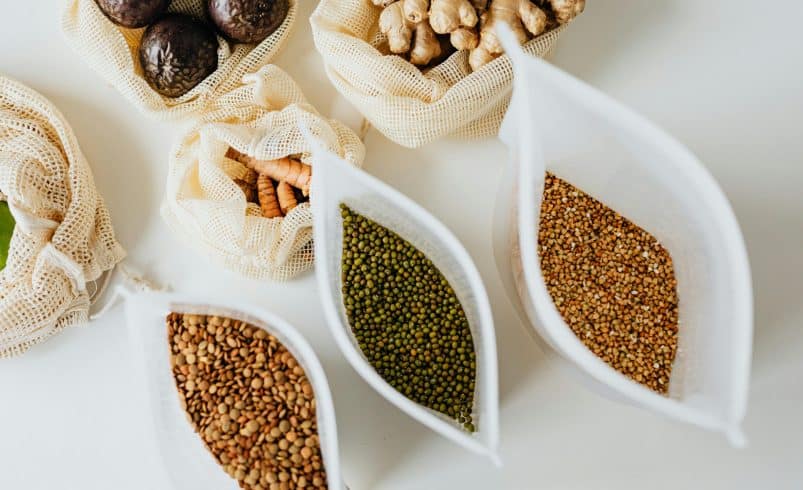Pantry Staples: Your Guide to Quick and Healthy Meal Prep
- September 5, 2025
- 0
According to a recent study by the American Heart Association, people who cook at home at least 5 times per week are 28% more likely to maintain a
According to a recent study by the American Heart Association, people who cook at home at least 5 times per week are 28% more likely to maintain a

According to a recent study by the American Heart Association, people who cook at home at least 5 times per week are 28% more likely to maintain a healthy diet. Yet, the secret to consistent home cooking isn’t just motivation – it’s having the right ingredients at your fingertips. A well-stocked pantry is your foundation for creating nutritious meals, even on your busiest days.
A well-organized pantry serves as the cornerstone of nutritious home cooking. Start by categorizing your staples into clear zones: grains, proteins, seasonings, and canned goods. This systematic approach streamlines meal preparation and prevents forgotten items from expiring.
Storage containers made of clear glass or BPA-free plastic protect ingredients from moisture and pests while maintaining visibility. Airtight containers particularly benefit items like nuts, seeds, and whole grains, extending their shelf life significantly. Label each container with the contents and purchase date to track freshness.
Strategic shopping maximizes your pantry’s value. Buy frequently used staples in bulk during sales, focusing on versatile ingredients that appear in multiple recipes. Compare unit prices rather than package prices to identify genuine deals. Consider joining wholesale clubs or food co-ops for better prices on organic and specialty items.
Understanding shelf-life guidelines prevents waste and ensures food safety. Whole grains typically last 6-12 months in proper storage, while dried beans can remain viable for up to two years. Rotate items using the first-in-first-out method, placing newer purchases behind older ones.
Quick-cooking whole grain options provide nutritious meals without lengthy preparation. Quinoa cooks in 15-20 minutes, offering complete protein and fiber. Rolled oats serve multiple purposes, from breakfast porridge to baked goods. Bulgur wheat requires minimal cooking time and works well in salads and side dishes.
Ancient grains add nutritional diversity to your pantry. Amaranth delivers lysine, an essential amino acid often lacking in grains. Teff provides exceptional iron content, while millet offers magnesium and antioxidants. These grains create unique textures and flavors in various dishes.
For pasta alternatives, stock brown rice noodles, chickpea pasta, or lentil-based options. These choices increase protein and fiber content while accommodating gluten-free diets. They cook quickly and maintain texture well in both hot and cold preparations.
Different rice varieties suit various cooking needs. Brown rice provides more fiber and nutrients than white varieties. Basmati offers aromatic qualities perfect for Indian and Middle Eastern dishes. Short-grain rice works best for sticky preparations like sushi or rice pudding.
Canned and dried legumes form the backbone of plant-based protein options. Black beans, chickpeas, and lentils provide versatile protein sources. Dried varieties offer better value and control over sodium content, while canned options provide convenience for quick meals.
A diverse selection of nuts and seeds delivers healthy fats and protein. Almonds, walnuts, and pumpkin seeds make nutritious snacks and recipe additions. Store these in the refrigerator or freezer to prevent rancidity and preserve nutritional value.
Shelf-stable protein alternatives include textured vegetable protein (TVP), dried seaweed, and nutritional yeast. These ingredients add protein and umami flavor to vegetarian and vegan dishes. They require minimal storage space while providing maximum nutritional impact.
Essential herbs and spices transform basic ingredients into flavorful meals. Cumin, turmeric, and paprika add depth to plant-based dishes. Fresh herbs can be dried or frozen for long-term storage, maintaining their aromatic properties.
Select cooking oils based on smoke point and nutritional profile. Extra virgin olive oil suits low-heat cooking and dressings, while avocado oil handles high temperatures well. Store oils away from light and heat to prevent oxidation.
Natural sweeteners like maple syrup, date paste, and coconut sugar provide alternatives to refined sugar. These options contain minerals and create complex flavor profiles in both sweet and savory dishes.
Umami-rich ingredients enhance satisfaction in plant-based meals. Dried mushrooms, miso paste, and tomato paste add depth and complexity. These concentrated flavors reduce the need for excessive salt or artificial enhancers.
Stock various canned vegetables for quick meal preparation. Fire-roasted tomatoes, corn, and green beans maintain good texture and flavor. Choose low-sodium options when available and rinse regular varieties to reduce sodium content.
Healthy canned protein options include wild-caught salmon, sardines, and no-salt-added beans. These provide quick protein sources for emergency meals or time-constrained cooking. Select BPA-free cans when possible and check expiration dates regularly.
Tomato-based products serve multiple culinary purposes. Crushed tomatoes, sauce, and paste create bases for soups, stews, and sauces. These versatile ingredients reduce preparation time while maintaining nutritional value.
Create satisfying 15-minute meals by combining quick-cooking proteins with whole grains and canned vegetables. Quinoa bowls topped with chickpeas and fire-roasted vegetables offer complete nutrition with minimal effort.
Emergency meal ideas rely on shelf-stable ingredients requiring no refrigeration. Bean and rice burritos, instant soup bases with dried vegetables, and pasta with canned sauce provide reliable options during power outages or unexpected situations.
Mix and match ingredients to prevent meal monotony. One grain base can support multiple flavor profiles through different seasonings and protein combinations. This approach maximizes pantry ingredients while maintaining meal variety.
Batch cooking strategies optimize pantry ingredients and time management. Prepare large quantities of grains and legumes for multiple meals. Portion and freeze excess for future use, creating your own convenient frozen meals.
A well-organized pantry is your secret weapon for maintaining a healthy lifestyle. Start with these essentials, and you’ll always be prepared to create nutritious meals in minutes. Remember, the key isn’t having everything – it’s having the right ingredients that work for your cooking style and health goals.